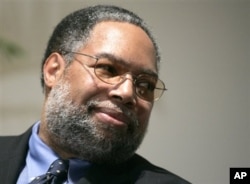The United States' first black president, Barack Obama, will officially open the nation's first museum devoted exclusively to African-American history and culture on September 24 in Washington, D.C.
With the countdown underway, a vast collection is being assembled in a building on Washington's National Mall, not far from other landmarks such as the Washington Monument and the White House.
"This isn't a single African-American story, but it is a story that touches us all and that allows people, regardless of race, to see that they, too, are shaped by the African-American experience," said Lonnie G. Bunch III, founding director of the Smithsonian's National Museum of African American History and Culture.
A unique collection
For the last eight years, a major campaign was conducted to find and collect artifacts, documents and other items to make up the museum's permanent collection.
"We … started with zero objects," Bunch said. "We have now collected maybe 25,000 artifacts from all over the country."
The museum's collection includes items such as 19th-century bills of sale for slaves, the fedora worn by pop singer Michael Jackson during his 1992 "Victory" tour, and a once racially segregated railway car with separate seating areas for black and white passengers.
"This is a unique situation,” said Michele Gates Moresi, one of the curators who assembled artifacts that reflect periods of African-American history. “Usually you build a museum for a collection that's already in place. We had to build the museum and establish the things to put in it at the same time."
Exhibits on African-Americans in film and music will also be among 11 permanent displays. Among the items included: singer Chuck Berry’s cherry-red Cadillac automobile. Also on display will be possessions of the late singer and actress Lena Horne, the first black performer to sign with a major Hollywood studio.
Painful chapters
The museum will also tell the story of slavery, which lasted 245 years in the United States. It was banned in 1865 with adoption of the 13th Amendment to the Constitution.
Among the items on display will be original slave shackles and bullwhips used on black men, women and children held in bondage. Other exhibits will contain tools used by slaves and a log cabin in which they lived.
"We hope that we will tell a story that, on the one hand, will make you angry about what happened to people, but on the other hand, it will inspire you about the ability of America to perfect itself, to right a wrong," said museum director Bunch.
The museum also possesses 40 items that belonged to abolitionist Harriet Tubman, who in the mid-1800s helped hundreds of African-American slaves reach freedom in the North through the secret route known as the Underground Railroad.
‘Healing and reconciliation’
"The unique thing we can do at the Smithsonian is present [visitors] with those real artifacts and make history real," Gates Moresi said.
Nearly $500 million in public and private funds was raised to build the 37,000-square-meter (400,000-square-foot) museum.
"The museum will be a place for healing and reconciliation," Bunch said. "Ultimately, it will remind us of our history [and] the challenges we still face, and point us toward what we can become."














